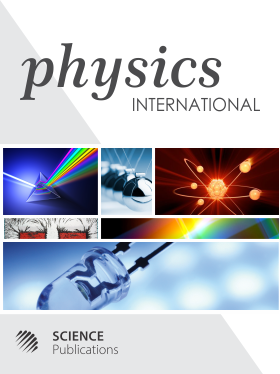References
Atoui, M., Barbaro, M. B., Hoballah, M., Keyrouz, C., Lassaut, M., Marchand, D., Quéméner, G., & Voutier, E. (2023). Determination of the Moments of the Proton Charge Density.
ArXiv, 13521.
https://doi.org/10.48550/arXiv.2304.13521Berman, M. S. (1992). Large Number Hypothesis.
International Journal of Theoretical Physics,
31, 1447–1450.
https://doi.org/10.1007/bf00673977Beyer, A., Maisenbacher, L., Matveev, A., Pohl, R., Khabarova, K., Grinin, A., Lamour, T., Yost, D. C., Hänsch, T. W., Kolachevsky, N., & Udem, T. (2017). The Rydberg Constant and Proton Size from Atomic Hydrogen.
Science,
358(6359), 79–85.
https://doi.org/10.1126/science.aah6677Bezginov, N., Valdez, T., Horbatsch, M., Marsman, A., Vutha, A. C., & Hessels, E. A. (2019). A Measurement of the Atomic Hydrogen Lamb Shift and the Proton Charge Radius.
Science,
365(6457), 1007–1012.
https://doi.org/10.1126/science.aau7807Cetto, A. M., Peña, L. D. la, & Santos, E. (1986). Dirac’s large-number hypothesis revised. Astronomy and Astrophysics, 164(1), 1–5.
Dirac, P. A. M. (1938). A new basis for cosmology.
Proceedings of the Royal Society A,
165(921), 199–208.
https://doi.org/10.1098/rspa.1938.0053Dirac, P. A. M. (1974). Cosmological models and the Large Numbers hypothesis.
Proceedings of the Royal Society A,
338(1615), 439–446.
https://doi.org/10.1098/rspa.1974.0095Dirac, P. A. M. (1979). The Large Numbers hypothesis and the Einstein theory of gravitation.
Proceedings of the Royal Society A,
365(1720), 19–30.
https://doi.org/10.1098/rspa.1979.0003Djukanovic, D., Harris, T., Von Hippel, G., Junnarkar, P. M., Meyer, H. B., Mohler, D., Ottnad, K., Schulz, T., Wilhelm, J., & Wittig, H. (2021). Isovector electromagnetic form factors of the nucleon from lattice QCD and the proton radius puzzle.
Physical Review D,
103(9), 094522.
https://doi.org/10.1103/physrevd.103.094522Freedman, W. L. (2021). Measurements of the Hubble Constant: Tensions in Perspective.
The Astrophysical Journal,
919(1), 16.
https://doi.org/10.3847/1538-4357/ac0e95Gao, H., & Vanderhaeghen, M. (2022). The proton charge radius.
Reviews of Modern Physics,
94(1), 015002.
https://doi.org/10.1103/revmodphys.94.015002Khetan, N., Izzo, L., Branchesi, M., Wojtak, R., Cantiello, M., Murugeshan, C., Agnello, A., Cappellaro, E., Della Valle, M., Gall, C., Hjorth, J., Benetti, S., Brocato, E., Burke, J., Hiramatsu, D., Howell, D. A., Tomasella, L., & Valenti, S. (2021). A new measurement of the Hubble constant using Type Ia supernovae calibrated with surface brightness fluctuations.
Astronomy & Astrophysics,
647(A&A), A72.
https://doi.org/10.1051/0004-6361/202039196Kritov, A. (2021). Explicit Values for Gravitational and Hubble Constants from Cosmological Entropy Bound and Alpha-Quantization of Particle Masses. Progress in Physics, 17(2), 158–163.
Lau, Y. K., & Prokhovnik, S. J. (1986). The Large Numbers Hypothesis and a Relativistic Theory of Gravitation.
Australian Journal of Physics,
39(3), 339–346.
https://doi.org/10.1071/ph860339Liao, K., Shafieloo, A., Keeley, R. E., & Linder, E. V. (2019). A Model-independent Determination of the Hubble Constant from Lensed Quasars and Supernovae Using Gaussian Process Regression.
The Astrophysical Journal Letters,
886(1), L23.
https://doi.org/10.3847/2041-8213/ab5308Lusso, E., Piedipalumbo, E., Risaliti, G., Paolillo, M., Bisogni, S., Nardini, E., & Amati, L. (2019). Tension with the flat ΛCDM model from a high-redshift Hubble diagram of supernovae, quasars, and gamma-ray bursts.
Astronomy & Astrophysics,
628(A&A), L4.
https://doi.org/10.1051/0004-6361/201936223Mercier, C. (2019). Calculation of the Universal Gravitational Constant, of the Hubble Constant, and of the Average CMB Temperature.
Journal of Modern Physics,
10(6), 641–662.
https://doi.org/10.4236/jmp.2019.106046Perl, M. L., Lee, E. R., & Loomba, D. (2004). A Brief Review of the Search for Isolatable Fractional Charge Elementary Particles.
Modern Physics Letters A,
19(35), 2595–2610.
https://doi.org/10.1142/s0217732304016019Pesce, D. W., Braatz, J. A., Reid, M. J., Riess, A. G., Scolnic, D., Condon, J. J., Gao, F., Henkel, C., Impellizzeri, C. M. V., Kuo, C. Y., & Lo, K. Y. (2020). The Megamaser Cosmology Project. XIII. Combined Hubble Constant Constraints.
The Astrophysical Journal Letters,
891(1), L1.
https://doi.org/10.3847/2041-8213/ab75f0Ray, S., Mukhopadhyay, U., Ray, S., & Bhattacharjee, A. (2019). Dirac’s large number hypothesis: A journey from concept to implication.
International Journal of Modern Physics D,
28(08), 1930014.
https://doi.org/10.1142/s0218271819300143Riess, A. G., Yuan, W., Macri, L. M., Scolnic, D., Brout, D., Casertano, S., Jones, D. O., Murakami, Y., Anand, G. S., & Breuval, L. (2022). A Comprehensive Measurement of the Local Value of the Hubble Constant with 1 km s−1 Mpc−1 Uncertainty from the Hubble Space Telescope and the SH0ES Team.
The Astrophysical Journal Letters,
934(1), L7.
https://doi.org/10.3847/2041-8213/ac5c5bRushdi, M. A., & Rushdi, A. M. (2016). On the Fundamental Masses Derivable by Dimensional Analysis.
Journal of King Abdulaziz University: Engineering Sciences,
27(1), 35–42.
https://doi.org/10.4197/eng.27-1.3Shuntov, M. (2018).
Unveiling the Concordance Model of Cosmology [Aix-Marseille Universit´e].
https://doi.org/10.13140/RG.2.2.30613.83688Talbot, Paul. (2021). The Cosmospheric Principle: A Systemic Modeling of the Universe (pp. 97–100).
Valev, D. (2013). Three fundamental masses derived by dimensional analysis.
Space Science International,
1(2), 145–149.
https://doi.org/10.3844/ajssp.2013.145.149Valev, D. T. (2015). Estimations of Neutrino and Graviton Masses by a Phenomenological Mass Relation for Stable Particles.
Physics International,
6(2), 82–88.
https://doi.org/10.3844/pisp.2015.82.88Wesson, P. S. (2004). Is Mass Quantized?
Modern Physics Letters A,
19(26), 1995–2000.
https://doi.org/10.1142/S0217732304015270Wilmot, R. G. (2021).
Exact value of the hubble constant the most precise value of the hubble constant deduced from other constants of physics calculation of the hubble constant with an accuracy up to the tenth decimal figure deduced from known physics constants. Cosmic background radiation temperature and its calculation deduced from known physics constants. The large numbers hypotesis explained. Calculation of the change of the electromagnetic and gravitational fine structure constants, with the age of the universe.
https://doi.org/10.13140/RG.2.2.25508.60802Wolf, C. G. (2022).
Hubble constant H0 is derived from Newtonian gravitational constant G, speed of light in vacuum c, electron mass me, classical electron radius re squared and fine structure constant α - all being primarily constants of quantum mechanics, while G is mostly associated to cosmology and speed of light c being omnipresent in both worlds - large and small.
https://doi.org/10.13140/RG.2.2.15487.48801Xiong, W., Gasparian, A., Gao, H., Dutta, D., Khandaker, M., Liyanage, N., Pasyuk, E., Peng, C., Bai, X., Ye, L., Gnanvo, K., Gu, C., Levillain, M., Yan, X., Higinbotham, D. W., Meziane, M., Ye, Z., Adhikari, K., Aljawrneh, B., … Zhao, Z. W. (2019). A small proton charge radius from an electron–proton scattering experiment.
Nature,
575, 147–150.
https://doi.org/10.1038/s41586-019-1721-2Yang, T., Birrer, S., & Hu, B. (2020). The first simultaneous measurement of Hubble constant and post-Newtonian parameter from time-delay strong lensing.
Monthly Notices of the Royal Astronomical Society: Letters,
497(1), L56–L61.
https://doi.org/10.1093/mnrasl/slaa107

